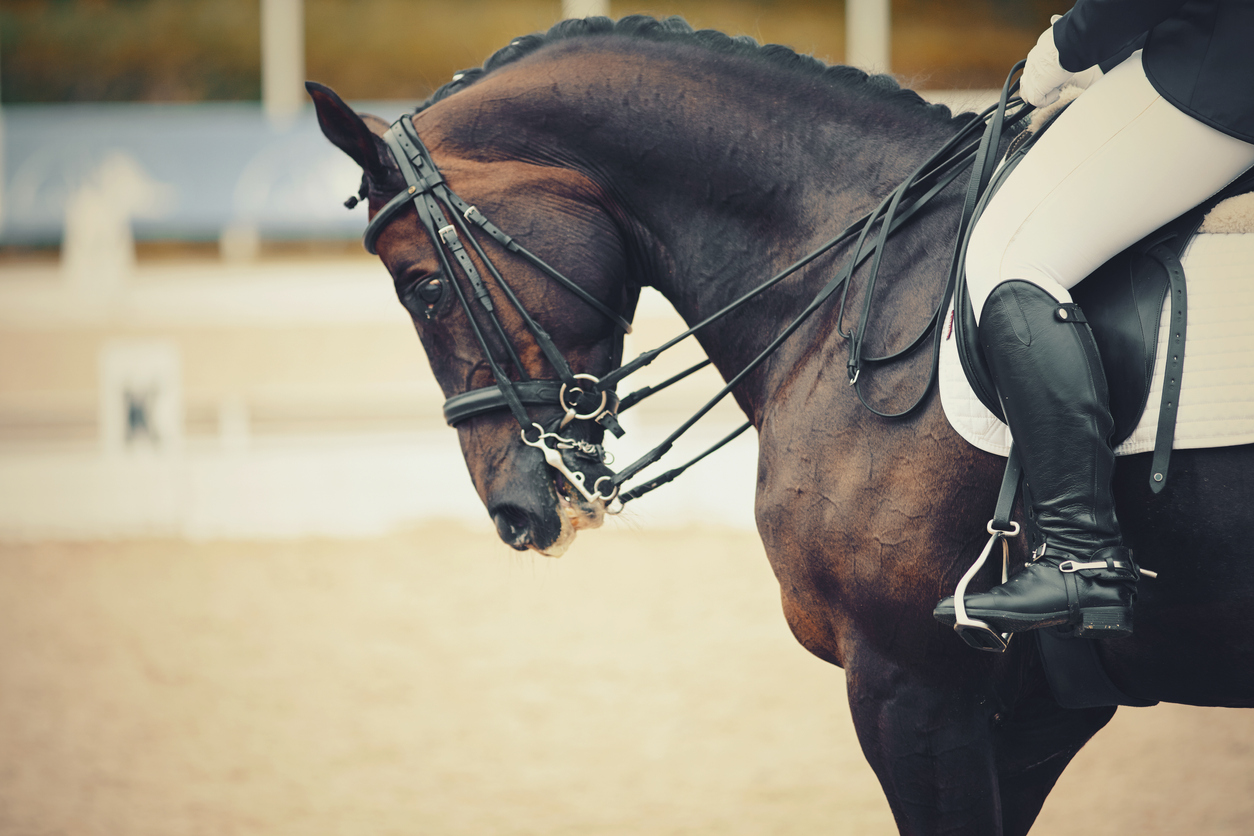Home > Horse World > Study reveals preferences for extreme equine head and neck shapes
Study reveals preferences for extreme equine head and neck shapes
- April 4, 2024
- ⎯ Christine Barakat
Listen here:
A slight but significant human tendency to prize extremes in equine head and neck shapes may have negative implications for horses, according to Australian researchers.

“The welfare issues surrounding the position of horses’ heads and necks in some disciplines such as dressage and reining are well known,” says Georgina Caspar, a PhD candidate at the University of Sydney. “Of particular concern is the practice of hyperflexion, also called rollkur, which forces the horse’s neck into an extremely arched position, sometimes for extended periods.”
The issue extends beyond training, Caspar continues. “There is also a concern that breeding choices that produce foals which have a certain ‘look’ or ‘type’ might negatively affect a horse’s athletic ability and general health.”
With those concerns in mind, Caspar and her colleagues decided to survey Australians about their preferences for particular equine head and neck shapes and positions. Respondents were asked to choose their ideal shape from a series of silhouettes representing various facial profiles (straight, concave, convex), ear lengths and positions, neck shapes (thick, thin, cresty, straight) and head-and-neck positions (low, high, arched).
There were no “correct” answers among these choices, says Caspar. “Head and next shape varies widely among horses,” she says. “The silhouettes at either end of each category were quite extreme; however, I have certainly found these shapes to exist within the horse population.” The respondents also provided demographic data and described their level of experience with horses. In all, 1,234 responses were collected.
When they tabulated the results, the researchers discovered that people generally preferred intermediate equine head shapes and profiles, but a small but notable proportion of people opted for extremes. “I think we expected that most people would be drawn to the ‘neutral’ or intermediate shape,” says Caspar. “However, it is worth acknowledging that although those that chose the extreme were in the minority, they were there.”
For instance, 57 percent of respondents preferred the intermediate neck shape, but 38 percent preferred a thicker-than-typical neck. “One of our questions when we undertook this study was whether we were inherently drawn to thicker necks or whether it was something that, through experience, we learned to like,” says Caspar. “Research has shown that sale horses in magazines are presented with an ‘arched’ neck, and we know that in the show ring cresty necks are favored. We know that many horses in ancient art are often portrayed with very cresty ‘arched’ necks; perhaps this signifies power and speed in the same way.” Caspar says the fact that experienced respondents preferred thicker necks compared to those that didn’t own or ride horses warrants further investigation.
With regard to head shape, 58 percent of respondents choose an intermediate profile, while 28 percent preferred a more concave shape. Differences were slightly less pronounced when it came to ear size: 51 percent of respondents choose the intermediate length, while longer ears were preferred by 43 percent and smaller ears by 6 percent.
“It is probably only a minority of people who may be breeding for some of these extremes,” says Caspar. “For the most part the horse is bred for a functional athletic ability; it is when we start to breed for a certain type that cannot meet this athletic ability due to conformation that we need to be concerned.”
One particularly encouraging finding of the study, says Caspar, is that only 7 percent of respondents preferred a head and neck position classified as “behind the vertical,” meaning the horse’s neck was excessively bent to tuck his nose toward his chest. Respondents who classified themselves as “novice” horsemen were 1.8 times more likely to choose this headset. The remaining 93 percent preferred a more natural head-and-neck carriage considered “in front of the vertical.”
“Further research could explore the origins of these preferences and whether they do actually impact on riding decisions,” says Caspar.
Reference: “Human preferences for conformation attributes and head-and-neck positions in horses,” PloS One, June 2015
This article first appeared in EQUUS issue #460
Don’t miss out! With the free weekly EQUUS newsletter, you’ll get the latest horse health information delivered right to your in basket! If you’re not already receiving the EQUUS newsletter, click here to sign up. It’s *free*!





